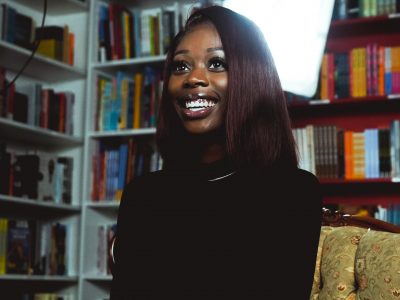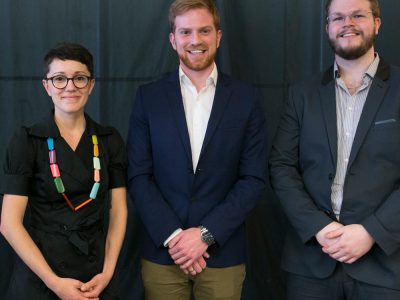By Suzanne Bowness
Photos by Chris Roussakis
Alan Steele’s voice energizes when he’s talking about his engineering students. He’s particularly eager to describe some of the neat projects they’ve come up with in his third-year design course, a project-based class that invites students to synthesize the skills they’ve learned to that point with the goal of building something practical in preparation for their capstone project in final year. This year’s efforts include an insect habitat that changes lighting and heat to mimic dusk and dawn, and a project in partnership with a local office building to monitor commuters’ use of bicycles with a shed that logs greenhouse gases saved through pedal power.
Steele adds that the excitement the students have for bringing their ideas to life makes the class fun.
“To learn about some of the real world applications is obviously worthwhile for the engineering students, but it also enthuses them,” he says.
While Steele’s own talents for inspiring such enthusiasm may not be news to his students, this associate professor has just added a new honour to his teaching record—a 3M National Teaching Fellowship, one of only up to ten awarded per year by the Society for Teaching and Learning in Higher Education (STLHE) and 3M Canada.
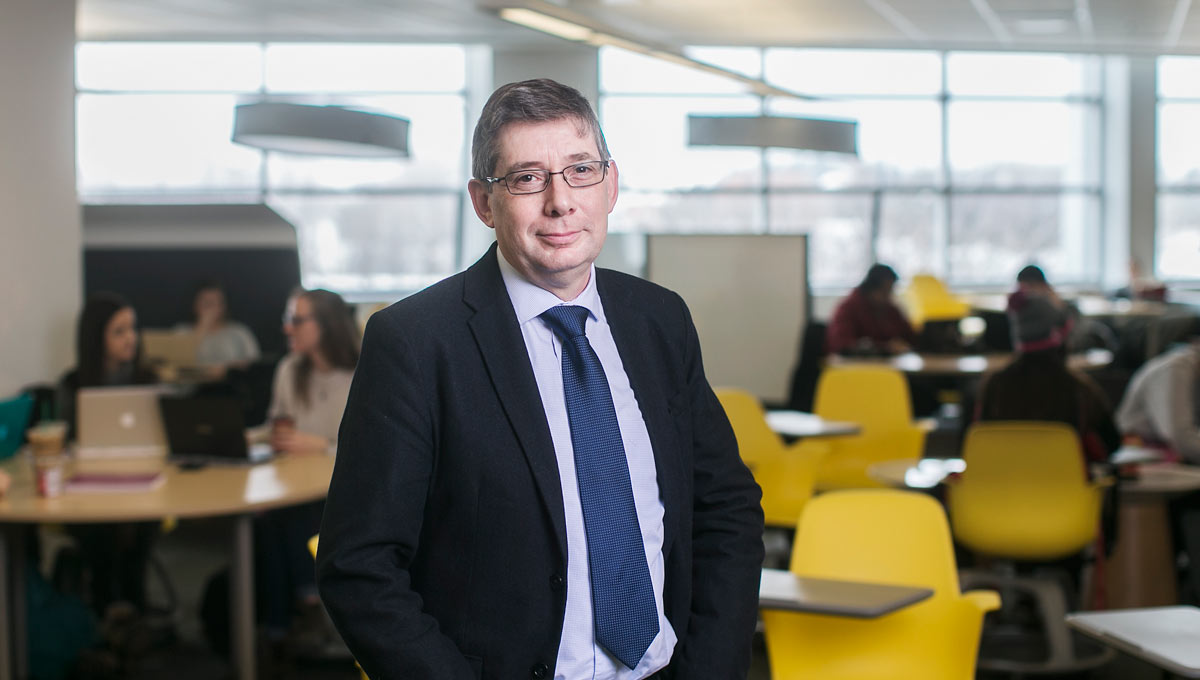
3M Teaching Award Not
Steele’s First Recognition
The award is not Steele’s first recognition. In 2011, he was awarded both the Ontario Confederation of University Faculty Associations Teaching Award and Carleton University’s Provost Fellowship in Teaching. He has also received a University Teaching Achievement Award (2007) and was a co-recipient of a University Service Excellence Award for Innovation (2013) for the Discovery Centre.
As director of the Discovery Centre for Undergraduate Research and Engagement, an informal learning space in the MacOdrum Library, Steele’s impact has moved even beyond his home department of Electronics in the Faculty of Engineering and Design. Tasked by the Provost to create a space that was collaborative and inclusive, Steele (along with librarian colleagues Margaret Haines and Valerie Critchley), came up with an environment that features flexible furniture arrangements, white boards, and large screen displays for students to hook up their laptops and gather around the same screen. Other additions include treadmill desks and 3D printers.
Three years later, the space is incredibly popular.
“The Discovery Centre is set up to be a place where groups of students can get together, can talk, and can interact and further their studies. The interaction that they will have discussing ideas, concepts, maybe self-correcting, all helps as an added dimension to their learning,” says Steele.
The Discovery Centre has also attracted visitors from other academic institutions and even government departments keen to create similar spaces. Along with his librarian colleagues, Steele recently authored a chapter related to the project, called “Informal Learning Spaces in University Libraries”, as part of a book on informal learning spaces called Exploring Informal Learning Space in the University: Its Place in the Digital World (Ashgate 2017).
Publishing about pedagogy and sharing ideas with other teachers have also long been part of Steele’s own teaching practice. He has published several papers on pedagogical topics, and founded an informal group called the Carleton Committee on Engineering Education Research, to share teaching advice. The group now presents its insights even more widely by presenting papers at the Canadian Engineering Education Association. Steele is also a part of the interdisciplinary Carleton Committee on Community Engaged Pedagogy. Working with the Office of the Vice-President Research and International he also helped developed the Internship – Carleton University Research Experience for Undergraduate Students (I-CUREUS), to engage undergraduates to participate in research.
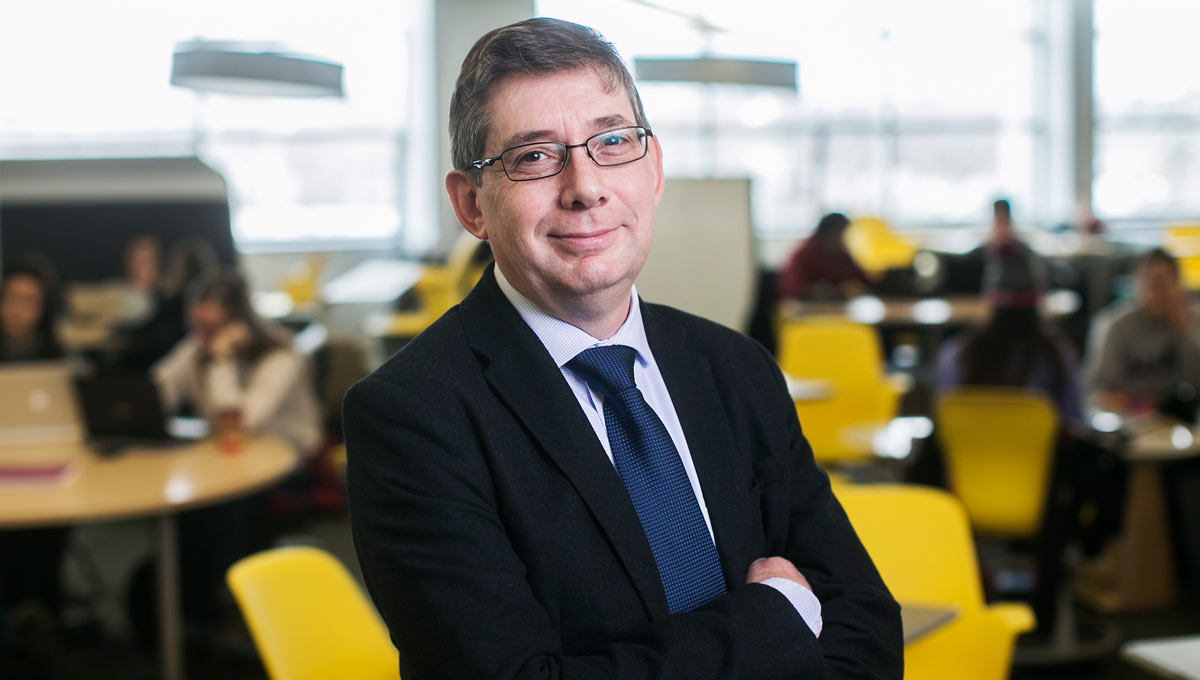
Lightbulb Moments
Back in the classroom, Steele says that even beyond those rewarding “lightbulb moments” where you can see students grasp concepts, he likes the challenge of thinking on his feet and also the back and forth between teacher and students. He also loves the practical aspects of engineering, such as seeing students solder for the first time, or designing and constructing their own circuits for a practical project, even if they do not get it working the first time. “They learn a lot better than me just telling them. They may have to order new parts and they’ve learned something significant. It builds a confidence, it builds ability, it builds extra understanding in ways that you can’t often convey in a classroom,” says Steele.
In addition to being impressed by his students, Steele is inspired by his colleagues.
“We do have an excellent support structure, including the Educational Development Centre and Instructional Media Services,” says Steele.
He adds that the increased number of teaching awards at Carleton is also motivating. “These are ways that show that Carleton supports development of teaching and celebrates it,” he says.
Steele says he is humbled by the 3M award and also to be counted among Carleton’s past winners, who include Alan Gillmor (1995), Brian Little (1995), Donald Westwood (1997), Aviva Freedman (1997), Tim Pychyl (1998), Janna Fox (2002), Robert Burk (2006) and Adrian Chan (2012). “We’ve got some great innovators here with teaching. You just need to look at those awards over the years and there is a community of some excellent academics who do amazing things in the classroom.”
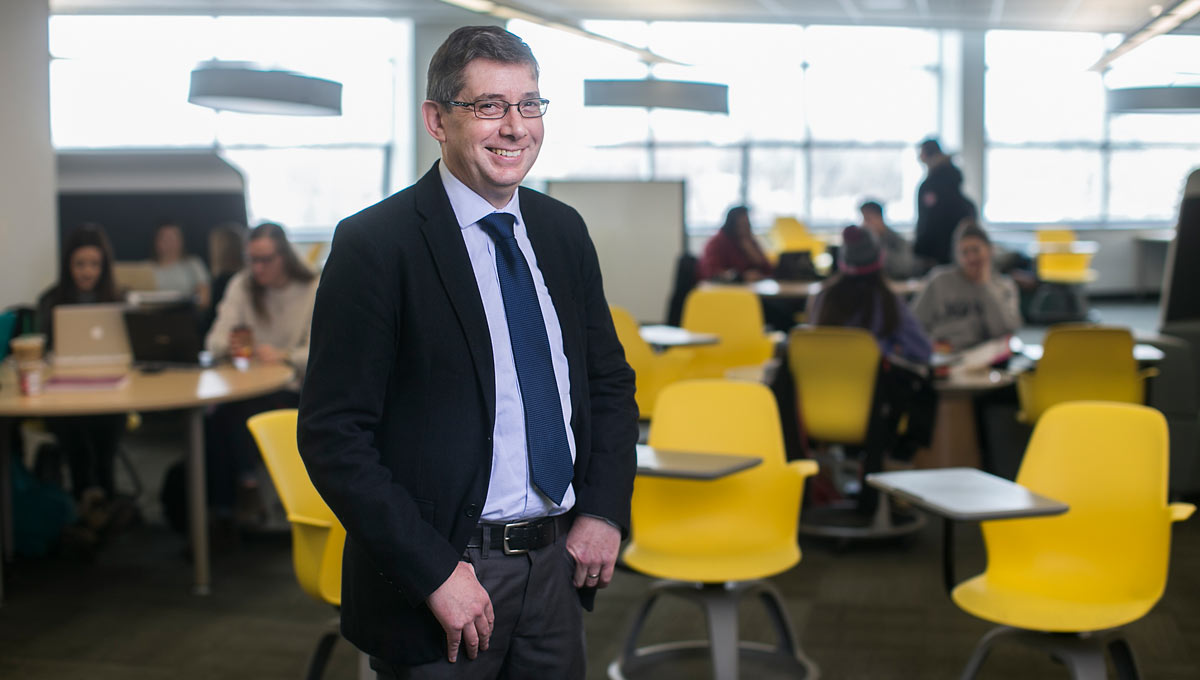
Wednesday, February 22, 2017 in Engineering, Innovation, Research
Share: Twitter, Facebook
